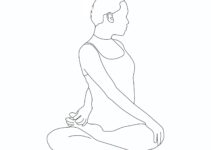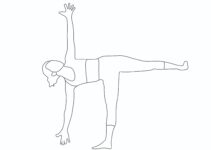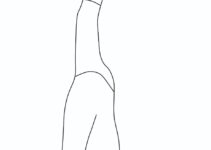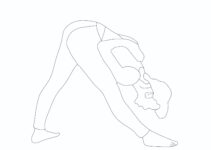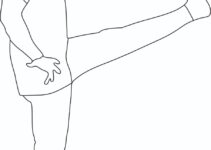Boat Pose Yoga, meaning
Boat pose yoga works on the body’s core and strengthens important core muscles such as erector spinae, abs, rectus abdominis, transverse abdominis, pelvic muscles, diaphragm, multifidus and internal and external obliques. It is an essential yoga pose that actively works on the core and abdominal muscles. Practising boat pose yoga helps one run, walk briskly, climb, prevent back pain and injury, and strengthen the heart. The body may be in a V shape to get the maximum benefits.

Different names of boat yoga
- Navasana
- Naukasana
- Paripurna Navasana
- Complete boat pose
Top facts about boat pose.
- In Sanskrit, it is pronounced as Paripurna Navasana (par-ee-POOR-nah nah-VAHS-anna.
- It is also known as Naukasana, pronounced ‘NAUK-AAHS-uh-nuh’.
- One of the best yoga poses for abdominal and core strength.
- The pose type is prone and seated.
- The target area is the core.
- It’s an intermediate-level yoga.
Five wonder benefits of Boat Pose Yoga
- Back pain relief: It is one of the best yoga exercises, which works on the lower back region and ensures the strengthening of muscles and spines.
- Weight loss yoga: If you want to burn belly fat, practice paripurna savasana. It not only melts abdominal fats but also helps to develop abs.
- Improves digestion: It helps treat digestion problems by sensitising the various stomach glands, ensuring digestive juices.
- Yoga for hernia: Many yoga shows contraindications for a hernia. However, boat pose helps treat hernia, including navel displacement.
- Strengthening abdominal muscles: Many people face weak abdominal muscles. This asana not only strengthens the abdominal muscles but also energises and enhances the efficiency of the abdominal organs.
How to do boat pose yoga step by step
Step 1
Lie down on the floor in Shavasana. Put your hands beside your thighs.
Step 2
Inhale deeply and exhale to the maximum. Lift your legs and upper body 45 degrees from the floor so the body seems like a boat.
Step 3
Maintain the position with normal breathing as long as you can hold. While maintaining the pose, try to bring your hands outside your knees.
Step 4
Inhale, and bring your legs first on the floor, followed by your upper body.
Beginners’ tips and variations
Practising the navasana mentioned above takes a lot of work. It needs long practice, flexibility and stamina. However, one should start with a simpler version of the pose. Raise your legs and upper body only at 15 or 20 degrees. One can also bend one’s knees while doing the yoga pose.
Preparatory yoga poses
- Shavasana
- Stick yoga pose
- Uttanpadasana
- Ardha Halasana
- Halasana
Counter yoga poses
- Shalbhasana
- Bhujangasana
- Pawanmuktasana
- Setubandhasana
- Markatasana
Contraindications
Paripurna Navasana shouldn’t be performed under the following conditions.
- Ulcer
- Abdominal surgery
- Low blood pressure
- Pregnancy
- Headache and migraine
- Asthma
- Acute back pain
- Menstrual cycle
Precautions
- Body movement needs to be minimised while performing the yoga pose.
- It is better to maintain the pose after exhaling. If possible, one can minimise breathing in the final stage.
- The legs shouldn’t be raised in a jerk.
- First, make the legs down, followed by the upper body.
- In the case of making a V shape in the pose, it is better to practice it with the help of a strip so that injuries or pain can be avoided.
Anatomy
The following muscles are actively involved during the practice of Paripurna Navasana
- Core and abdominal
- Lower back
- Quadriceps
- Pelvic
Therapeutic uses
- Diabetes
- Inflammatory bowel syndrome (IBS)
- Infertility issues
- Urinary problem

